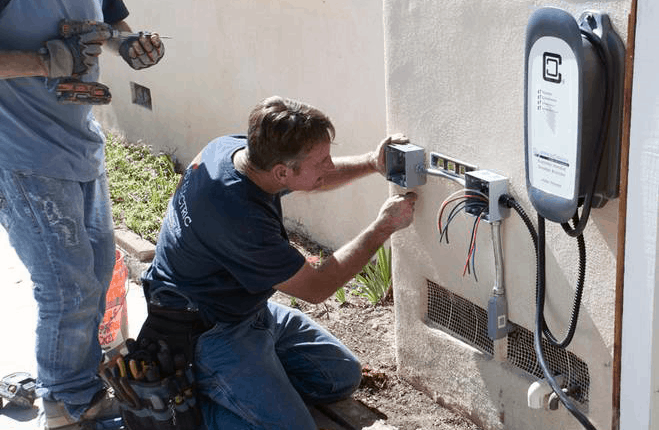In our rapidly evolving world, the shift towards sustainable transportation is more evident than ever. Electric cars have become a prominent choice for environmentally conscious individuals, offering a clean and efficient alternative to traditional vehicles. However, the convenience of electric vehicles heavily relies on the accessibility of charging infrastructure. This article aims to guide you through the process of “Installing Power Outlet for Electric Car,” ensuring that you can effortlessly charge your electric vehicle at home.
Understanding the Importance of Installing Power Outlet for Electric Car
As the popularity of electric cars continues to rise, having a dedicated power outlet for charging at home has become a necessity. It not only provides convenience but also plays a crucial role in reducing dependence on public charging stations. Imagine the freedom of being able to charge your electric car in the comfort of your own home, ensuring that it’s always ready for your next journey.
Key Steps in Installing Power Outlet for Electric Car
1. Assessing Electrical Capacity
Before diving into the installation process, it’s essential to evaluate your home’s electrical capacity. Ensure that your electrical panel can support the additional load required for charging an electric car. If necessary, consult with a qualified electrician to make any required upgrades to your electrical system.
2. Choosing the Right Location
Selecting the optimal location for your new power outlet is crucial. It should be easily accessible, close to where you park your electric car, and comply with local building codes. Consider factors such as the distance from the electrical panel, the availability of space, and the convenience of routing the charging cable.
3. Selecting the Appropriate Power Outlet
Not all power outlets are created equal when it comes to charging electric cars. The most common types are Level 1 (120 volts) and Level 2 (240 volts). Level 2 charging is faster and more efficient, making it the preferred choice for home installations. Make sure to choose an outlet that matches your electric car’s charging requirements.
4. Hiring a Licensed Electrician
While some individuals may have the expertise to handle electrical installations, it is highly recommended to hire a licensed electrician for this task. They will ensure that the installation complies with local regulations, guaranteeing both safety and functionality.
The Installation Process: Step by Step
1. Turn off the Power
Safety should always be the top priority. Before beginning any electrical work, turn off the power to the designated circuit at the electrical panel. This minimizes the risk of electric shock and ensures a safe working environment.
2. Install the New Circuit
If your existing electrical panel cannot support the additional load, your electrician will install a new dedicated circuit for the electric car charger. This involves running new wiring from the panel to the location of the power outlet.
3. Mount the Outlet Box
Once the circuit is in place, the electrician will mount the outlet box at the chosen location. This box will house the power outlet and provide a secure connection point for the charging cable.
4. Connect the Wiring
Carefully connect the wiring according to the manufacturer’s instructions. It’s crucial to follow the recommended guidelines to ensure a reliable and safe connection. Double-check all connections before proceeding.
5. Test the System
After completing the installation, test the power outlet and charging cable to ensure they are functioning correctly. This step helps identify any potential issues before regular use.
Read too: Revolutionizing Mobility with the Electric Car Charging Stations Payment System: Empowering the Drive
Conclusion: Charging Ahead with Confidence
Installing a power outlet for your electric car is a significant investment in the future of sustainable transportation. By following these steps and enlisting the help of a licensed electrician, you can enjoy the convenience of charging your electric vehicle at home. Say goodbye to the hassle of searching for public charging stations and embrace the freedom of having your personal charging station right at your fingertips.
